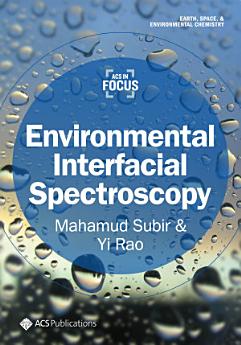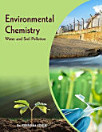Environmental Interfacial Spectroscopy
Über dieses E-Book
Despite the significance of interfacial processes in environmental chemistry, investigating environmental interfaces experimentally has always been a challenge. Recent advances in nonlinear spectroscopy (NLS) have demonstrated that techniques such as sum frequency generation (SFG) and second harmonic generation (SHG) are unique in their ability to probe buried chemical interfaces. The theoretical and practical aspect of these techniques in probing environmental interfaces is the primary focus of this e-book.
This e-book is geared toward curious and inquisitive minds eager to learn how molecules behave at the thin layers of chemical interfaces. A beautiful world, rich in unique insights into the interfacial environmental processes, awaits.
Autoren-Profil
Mahamud Subir is a physical chemist with expertise in laser spectroscopy and surface science. He is a dedicated teacher-scholar who enjoys bringing the world of advanced chemical topics and hands-on research experience with cutting-edge tools to undergraduate students and budding scientists of diverse background. Subir has earned his B.S. degree in Chemistry from Queens College, CUNY in 2003 and completed his PhD in 2009 under the supervision of Dr. Kenneth Eisenthal. His research focus was in the area of experimental nonlinear interfacial spectroscopy. For his postdoctoral fellowship at McGill University, Subir carried out research involving atmospheric and interfacial processes, in the group of Dr. Parisa Ariya. Thereafter, he joined the Department of Chemistry at Ball State University in 2012, where he is currently an associate professor. His research interest is primarily motivated by chemistry that occurs within the environment and in the realm of nanoscience. Using second harmonic generation spectroscopy as one of the major analytical techniques, Subir and his research group studies fundamental chemical processes at various planar and colloidal interfaces.
Yi Rao is a physical chemist with expertise in interfacial science, ultrafast spectroscopy, and nonlinear optics. Yi has obtained his PhD in 2003 under the supervision of Dr. Hong-fei Wang, in Institute of Chemistry, Chinese Academy of Science. In 2004, he joined Dr. Kenneth Eisenthal’s group at Columbia University as a postdoctoral fellow, in the area of experimental nonlinear interfacial spectroscopy. After his postdoc, Yi continued his career as a research associate, in collaboration with Drs. Nicholas Turro and Kenneth Eisenthal at Columbia University. Before his independent career, Yi worked as a research associate professor in the Department of Chemistry at Temple University in 2014. Yi joined the Department of Chemistry and Biochemistry at Utah State University as an assistant professor in 2017. His research interest is focused primarily on interfacial physical chemistry for environmental issues, solar energy conversion, and catalysis. Since 2017, Yi’s team has developed several state-of-the-arts interface-specific nonlinear optical spectroscopies for structures and dynamics at different interfaces. Yi is a recipient of National Science Foundation CAREER award.








